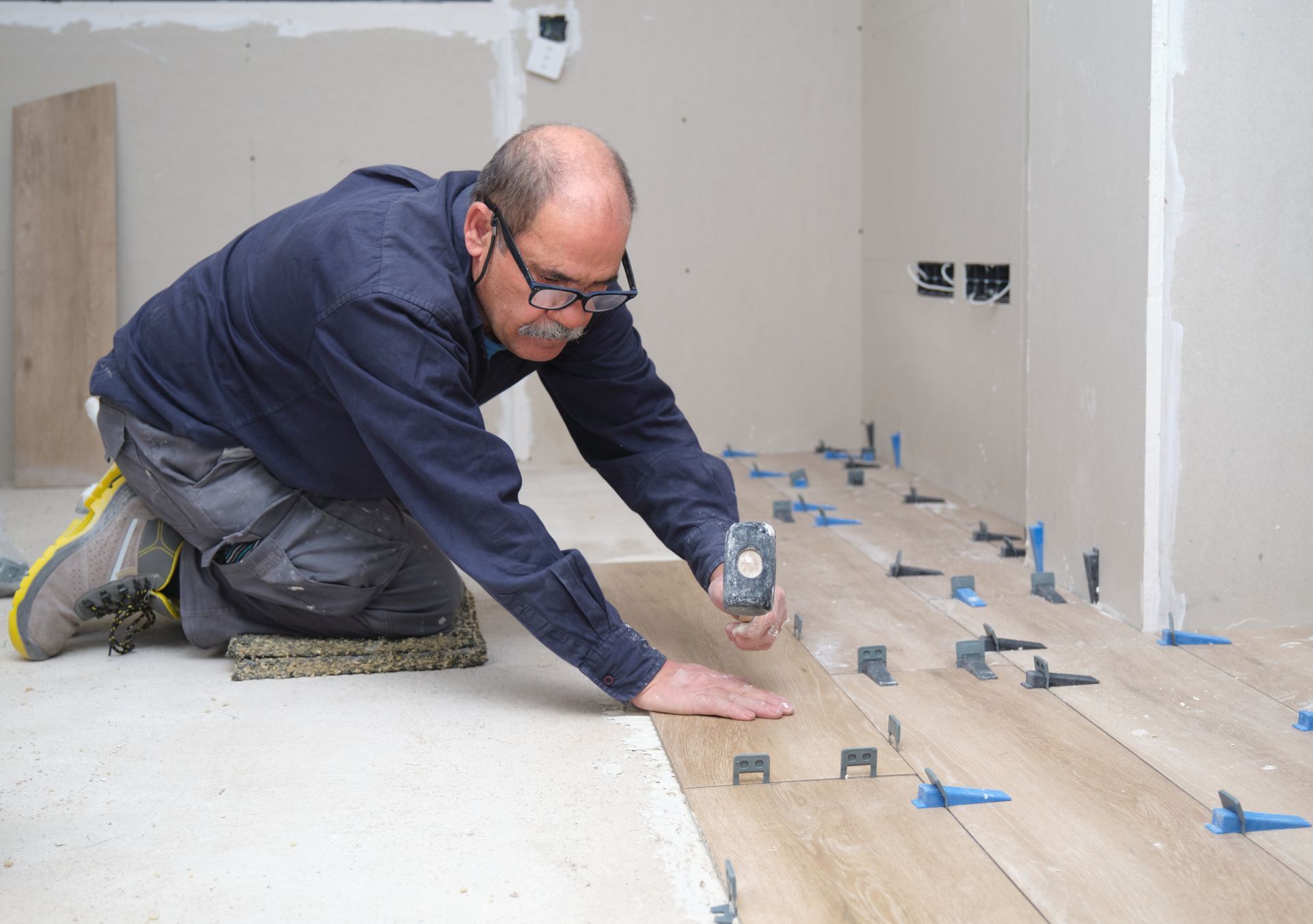New York Flooring Contractor Insurance
See How We're Different:
or Call Us: 212-425-8150

Most Common Business Policies
Index
Why Insurance is Crucial for Flooring Contractors in New York
Factors Driving Insurance Premium Increases in New York
Understanding Workers' Compensation and Liability Coverage
Industry Trends Affecting Flooring Contractors and Insurance
Tips for Flooring Contractors to Manage Insurance Costs
Conclusion: Navigating New York’s Flooring Contractor Insurance Landscape
Contact Us
For flooring contractors operating in New York, navigating the complex landscape of insurance requirements and costs is essential to running a successful and compliant business. The construction industry in New York, including specialized sectors like flooring installation, faces unique challenges that directly impact insurance premiums, claims, and coverage needs. Understanding these factors is critical not only to protect your business but also to ensure compliance with state regulations and safeguard your workforce.
In recent years, insurance premiums for construction firms in New York have seen a significant increase, driven by a surge in fraudulent claims and evolving labor laws. According to
WSHB Law, insurance premiums for construction projects have risen from approximately 8.5% of a $100 million project in 2020 to nearly 12.5% by 2023-2024. This trend underscores the importance of understanding how insurance functions within the flooring contracting segment of the construction industry.
Why Insurance is Crucial for Flooring Contractors in New York
Flooring contractors face a variety of risks on the job, from workplace injuries to property damage and liability claims. Given that construction workers represent a significant portion of workplace fatalities nationwide, with 18.5% of U.S. workplace deaths occurring in construction in 2025, comprehensive insurance coverage is not just a legal formality but a necessity for safety and financial protection.
Flooring contractors typically work in environments ranging from single-family homes to office buildings, installing materials like resilient floor tile, carpeting, linoleum, and hardwood flooring. Each job site presents unique hazards, including falls, equipment accidents, and exposure to harmful substances. Adequate insurance coverage helps mitigate the financial impact of these risks. For instance, a slip and fall accident on a job site could lead to significant medical expenses and potential lawsuits, making it imperative for contractors to have the right policies in place to cover these unforeseen events.
Moreover, flooring contractors in New York must navigate state-specific requirements and the broader construction industry’s challenges, such as increased scrutiny on labor law compliance and insurance claims. These factors contribute to rising insurance costs and the need for tailored policies that address the realities of flooring installation work. In a bustling city like New York, where projects can be both large and complex, the stakes are even higher. Contractors must stay informed about local regulations and ensure they are adequately covered to avoid costly penalties and disruptions to their operations.
Types of Insurance Flooring Contractors Need
Several types of insurance are essential for flooring contractors to consider:
- General Liability Insurance: Protects against third-party claims of bodily injury or property damage.
- Workers' Compensation Insurance: Covers medical expenses and lost wages for employees injured on the job, a critical coverage given the high-risk nature of construction work.
- Commercial Auto Insurance: Necessary if vehicles are used to transport materials or equipment.
- Professional Liability Insurance: Also known as errors and omissions insurance, this protects against claims of negligence or mistakes in professional services.
- Builder’s Risk Insurance: Covers property damage during construction projects, which can be relevant for larger flooring contracts.
Understanding these coverages and how they apply to your specific operations is the first step in securing appropriate insurance protection. It’s also important for flooring contractors to regularly review their insurance policies to ensure they are up-to-date with the latest industry standards and legal requirements. As the flooring industry evolves, so too do the risks associated with it, making ongoing education about insurance options vital. Networking with other contractors and attending industry seminars can provide valuable insights into best practices for managing risk and ensuring comprehensive coverage.
Additionally, flooring contractors should consider the potential benefits of bundling their insurance policies. Many insurance providers offer discounts for multiple policies, which can significantly reduce overall costs. This approach not only simplifies the management of insurance but also ensures that all aspects of the business are covered under a cohesive plan. By taking proactive steps to understand and secure the right insurance, flooring contractors can focus on their craft with greater peace of mind, knowing they are protected against the unpredictable challenges of their profession.

Factors Driving Insurance Premium Increases in New York
New York’s construction insurance market has experienced notable premium hikes in recent years. One of the primary drivers is the rise in fraudulent insurance claims, particularly fall-related claims in the construction sector. A 2023 investigation highlighted that some contractors’ liability insurance costs have surged dramatically—from $300,000 to as high as $2 million annually—due to these fraudulent claims, which have become alarmingly common in New York’s construction industry (ABC7NY).
Tracy Abatemarco, co-managing partner of WSHB's New York office, explained that what was once a rare claim has escalated into multiple claims annually, creating a “crescendo” effect that raises suspicion and drives up premiums. This environment has made insurers more cautious, resulting in higher costs for contractors who must bear the financial brunt of these industry-wide issues.
Additionally, changes in labor law have also contributed to premium increases. Dan Corbin, director of research for the Professional Insurance Agents of New York, pointed out that subcontractors now have the ability to bring claims directly against general contractors if injured, increasing liability exposure and insurance costs for all parties involved (Cooperator News).
Impact on Flooring Contractors
For flooring contractors, these trends mean that insurance premiums are no longer a static expense but a fluctuating cost influenced by broader industry dynamics. Smaller contractors may find it particularly challenging to absorb these increased costs, making it essential to work closely with insurance providers to find cost-effective solutions without compromising coverage.
Moreover, flooring contractors must be vigilant about compliance and risk management practices to reduce the likelihood of claims. Implementing rigorous safety protocols and thorough documentation can help mitigate risks and demonstrate responsibility to insurers. This proactive approach not only aids in keeping premiums manageable but also fosters a culture of safety within the workplace, which can lead to fewer accidents and claims over time.
Furthermore, the competitive landscape of the flooring industry adds another layer of complexity. As contractors vie for projects, they may feel pressured to lower their bids, sometimes at the expense of adequate insurance coverage. This can lead to a dangerous cycle where contractors underinsure themselves to remain competitive, ultimately increasing their risk exposure. In such a volatile market, it becomes crucial for contractors to balance competitive pricing with comprehensive insurance coverage, ensuring they are protected against unforeseen liabilities while still appealing to potential clients.
Understanding Workers' Compensation and Liability Coverage
Workers’ compensation insurance is a cornerstone of contractor insurance, especially in high-risk industries like flooring installation. Given that construction workers accounted for nearly one-fifth of all workplace fatalities in 2025, this coverage protects both employees and employers from the financial fallout of workplace injuries. The nature of flooring installation often involves heavy lifting, the use of hazardous materials, and exposure to various environmental risks, making it essential for contractors to prioritize safety and compliance with regulations.
In New York, workers’ compensation laws require contractors to carry this insurance to cover medical expenses, rehabilitation costs, and lost wages for injured workers. Failure to maintain proper coverage can result in severe penalties and legal liabilities. Furthermore, maintaining a safe work environment not only helps in complying with legal requirements but also fosters a culture of safety that can enhance employee morale and productivity. Regular training sessions and safety audits can significantly reduce the likelihood of accidents, thereby lowering insurance costs over time.
Liability insurance complements workers’ compensation by covering claims related to third-party injuries or property damage caused by the contractor’s operations. This is particularly important for flooring contractors working in occupied buildings or commercial spaces where accidental damage or injury could lead to costly lawsuits. For instance, if a client trips over tools left on-site or if a water leak from a newly installed floor damages a property, liability insurance serves as a financial safeguard against such incidents, ensuring that contractors can continue their operations without devastating financial repercussions.
Direct Actions and Legal Implications
One unique aspect of New York’s legal environment is the ability of subcontractors to bring direct claims against general contractors. This legal provision increases the exposure of general contractors and, by extension, subcontractors like flooring contractors, to liability claims. This factor has been cited as a reason for rising insurance premiums and increased scrutiny by insurers (Cooperator News). The implications of such legal frameworks necessitate that flooring contractors maintain not only adequate insurance coverage but also a thorough understanding of their contractual obligations and rights.
Understanding these legal nuances is critical for flooring contractors when negotiating contracts and insurance policies. It underscores the importance of having robust liability coverage and clear contractual agreements to manage risk effectively. Additionally, contractors should consider implementing comprehensive risk management strategies, such as conducting thorough background checks on subcontractors and ensuring that all parties involved in a project are adequately insured. This proactive approach not only mitigates potential legal issues but also enhances the overall professionalism and reliability of the contracting business, which can lead to increased client trust and repeat business.
Industry Trends Affecting Flooring Contractors and Insurance
The flooring contracting industry is a significant segment of the broader construction sector. According to an industry profile, there are approximately 18,100 flooring contractors in the U.S., primarily focused on installing resilient floor tile, carpeting, linoleum, and hardwood flooring. The majority of sales come from single-family homes and office buildings (Vertical IQ).
Globally, the construction industry accounts for more than 6% of the world’s GDP, reflecting its economic importance and the scale of activity that flooring contractors contribute to (Floor Trends Magazine).
These trends highlight the critical role of flooring contractors within the construction ecosystem and the importance of maintaining adequate insurance coverage to support continued growth and stability.
Emerging Challenges and Opportunities
As the industry evolves, flooring contractors must adapt to new technologies, materials, and regulatory requirements. Insurance providers are also adjusting their offerings to better fit the changing risk profiles of contractors. This dynamic environment presents both challenges and opportunities for flooring contractors who proactively manage their insurance needs.
Investing in safety training, leveraging technology for project management, and maintaining open communication with insurers can help contractors navigate these changes effectively. The rise of eco-friendly materials and sustainable practices is reshaping the market, compelling contractors to stay informed about the latest products and techniques that minimize environmental impact. This shift not only enhances their marketability but also aligns with the increasing consumer demand for sustainability in construction.
Furthermore, the integration of digital tools such as augmented reality (AR) and virtual reality (VR) is revolutionizing how flooring contractors present their services. These technologies allow clients to visualize flooring options in their spaces before installation, leading to more informed decisions and potentially higher customer satisfaction. As contractors embrace these innovations, they can differentiate themselves in a competitive market, while also reducing the likelihood of costly mistakes during the installation process.
Tips for Flooring Contractors to Manage Insurance Costs
Given the rising costs and complex insurance landscape in New York, flooring contractors should consider several strategies to manage their insurance expenses without sacrificing coverage quality.
- Shop Around for Policies: Comparing quotes from multiple insurers can help identify competitive rates and better coverage options.
- Bundle Insurance Policies: Some insurers offer discounts for bundling general liability, workers’ compensation, and commercial auto insurance.
- Implement Strong Safety Programs: Reducing workplace accidents can lead to fewer claims and lower premiums over time.
- Maintain Accurate Documentation: Proper record-keeping can help defend against fraudulent claims and support legitimate ones.
- Work with Experienced Brokers: Insurance brokers familiar with New York’s construction market can tailor policies to your specific needs and risks.
By taking a proactive approach to insurance management, flooring contractors can better control costs while ensuring comprehensive protection.
Additionally, flooring contractors should consider investing in training programs for their employees. Well-trained staff are not only more efficient but also more aware of safety protocols, which can significantly reduce the likelihood of accidents on the job site. Regular safety training sessions can instill a culture of safety within the company, leading to fewer incidents and, consequently, lower insurance premiums. Furthermore, some insurance companies may offer incentives or discounts for businesses that prioritize employee training and safety certifications.
Another effective strategy is to regularly review and update insurance policies to ensure they align with the current scope of work and business operations. As contractors take on new projects or expand their services, their insurance needs may change. By staying informed about the latest developments in the industry and adjusting coverage accordingly, flooring contractors can avoid overpaying for unnecessary coverage while still being adequately protected against potential risks.

Conclusion: Navigating New York’s Flooring Contractor Insurance Landscape
Insurance for flooring contractors in New York is a complex but essential aspect of doing business in a high-risk, highly regulated industry. With rising premiums driven by fraudulent claims and evolving labor laws, contractors must stay informed and engaged in managing their insurance needs.
Understanding the types of coverage required, the factors influencing premium costs, and the broader industry trends can empower flooring contractors to make informed decisions. Leveraging expert advice, maintaining rigorous safety standards, and fostering strong relationships with insurers are key strategies to ensure your business remains protected and competitive.
Staying ahead in this challenging environment is not just about compliance—it’s about safeguarding your workforce, your reputation, and your bottom line.
